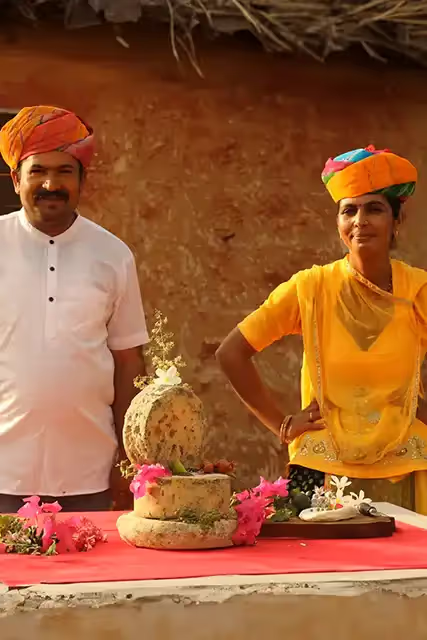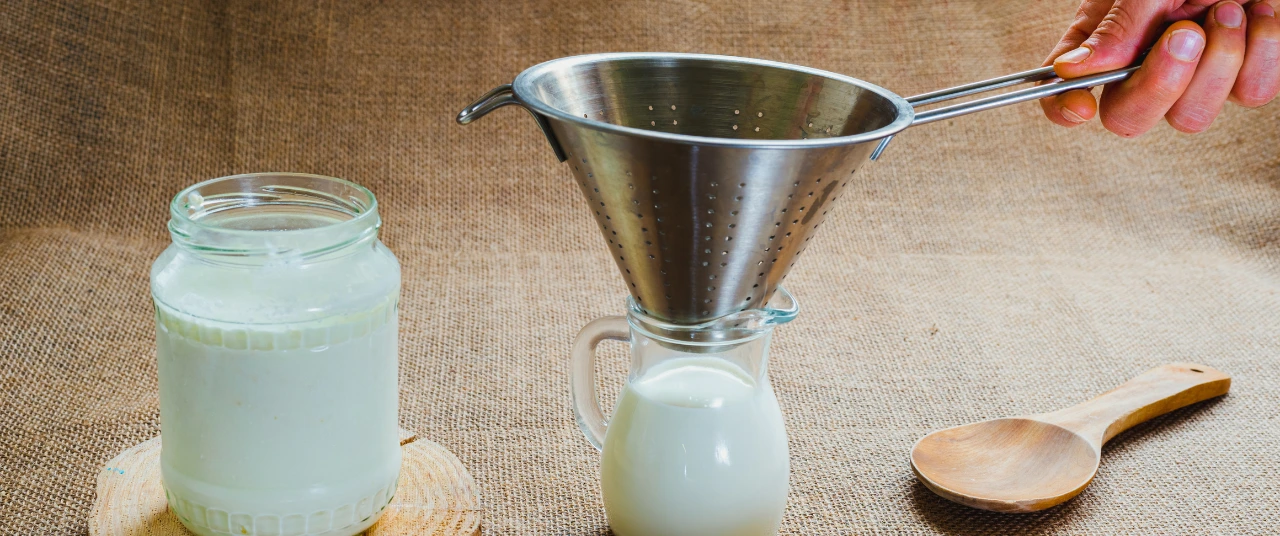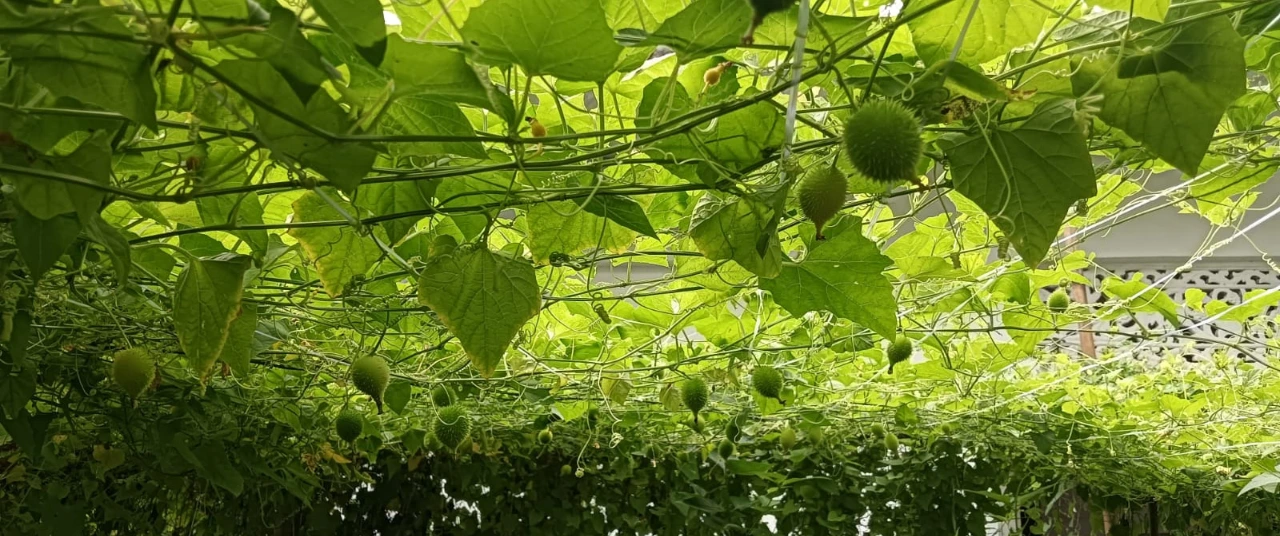Efforts to connect pastoral communities to new markets paid off






Arpan Kalotra, from the pastoral Maldhari community in Gujarat’s Saurashtra region, remembers how his grandfather once had a large herd of 300-400 goats that grazed on shared land. Today, much of that land is controlled by industries or the forest department, limiting grazing opportunities. With milk sales no longer providing enough income, younger generations have been moving away from pastoralism. Kalotra’s father no longer owns any goats, and his uncle's herd has shrunk to just 100. “Our livelihood and culture are disappearing,” Kalotra said. “How do we preserve what’s left?” In search of a solution, he turned to making artisanal cheese.
Kalotra and Bhimsinhbhai Ghangal are the co-founders of Panchal Dairy, an entrepreneurial initiative in Sayla, Gujarat that produces a range of fresh and aged artisanal cheeses from goat and sheep’s milk.
Panchal Dairy is one of the few new initiatives aiming to connect pastoralists with the market. While India is the largest global producer of milk, cow and buffalo milk dominate the industry. However, these dairies source milk from free-ranging animals like goats, camels, and sheep, directly from pastoral communities, and create various value-added products. The approach not only improves livelihoods but also helps give pastoral milk a distinct identity, which has often been overlooked.

Specialty Indian cheeses
Kalotra and Ghangal started Panchal Dairy in 2022 with the help of Sahjeevan, a non-profit organisation affiliated with the Center for Pastoralism. The two trained under renowned cheesemaker Namrata Sundaresan of Käse Cheese. A small production unit, Panchal Dairy procures 100 litres of milk daily from their community and crafts eight varieties of artisanal cheese. Goat’s milk is used to make marinated feta, fresh goat cheese, Halloumi, Saint Marcellin, and aged cheeses – Tomme and Tymsboro. Their sheep milk varieties include ricotta and both fresh and aged pecorino.
There is a highly increasing demand for artisanal cheeses in India, especially across tier-1 cities.
Goat’s milk, being low in fat content, is not valued at par with bovine milk, leaving traditional goat and sheep herding communities like the Maldharis in the lurch. Even though India has a substantial population of goats, their milk accounts for only 3% of total production. This results in a problem of surplus milk, which was traditionally sold to sweet shops as khoya or ghee.
After experimenting with a variety of value-added milk products, including flavoured milk, kulfi and ice cream, Kalotra and Ghangal settled on artisanal cheese due to its longer shelf life.
“There is a highly increasing demand for artisanal cheeses in India, especially across tier-1 cities,” said Aakriti Srivastava, co-founder of Bahula Naturals – a community-owned and operated pastoral milk brand in Rajasthan. In fact, the cheese market in India is expected to grow at a CAGR of 21.47%, potentially reaching INR 512.1 billion by 2032.
Bahula Naturals, located in Bajju village in Bikaner district, is working with 4000 camel herders through several partners on ground and focuses not just on bringing pastoral milk to market but also on ecosystem services such as improving soil health. On offer is Halloumi, aged cheshire and feta made from camel’s milk, along with camel milk ghee. Adding artisanal cheese to their portfolio also allows them to procure a higher quantity of milk from the local community of camel herders. “1 kg of cheese required about 60-70 litres of camel milk. [This way], every household was able to earn more,” said Srivastava.
Others, like Camel Charisma in Pali, Rajasthan also offer camel milk products, including cheese, to boost incomes of camel herders and conserve the camel population, while Nyukmadung Dairy in Arunachal Pradesh is the first yak milk parlour to be set up in India.

While these initiatives are helping support pastoral communities whose culture is closely intertwined with the livestock they breed, they also allow consumers to reap a variety of benefits.
Terrain-driven flavours
“Milk is nothing but the sum total of what an animal gets to consume. That's where the difference between stall-fed and controlled-environment reared animals versus a free-grazing animal comes in,” said Srivastava. Milk sourced from free-grazing animals is high quality, free from additional additives or preservatives and rich in nutritional properties due to the roughly 45 varieties of indigenous plants these animals feed on. The milk’s flavour, and that of the cheese, varies by both region and season, which is why these cheeses cannot be standardised, said Asma Sayed, co-founder of Bombay Fromagerie, who played a crucial role in helping Panchal Dairy set up operations.
Camel milk’s therapeutic, antioxidant and anti-bacterial properties have been widely cited, along with its suitability for those with lactose intolerance. Research suggests camel’s milk may help control glycemic levels in the long term for patients with Type 1 diabetes. A 2013 study found no cases of diabetes while studying the Raika community of Rajasthan that habitually consumes camel milk.
Meanwhile, goat’s milk is considered a close substitute for human milk, is easily-digestible, and has anti-inflammatory properties. Value-added products made from pastoral milk can be a good source of nutrition for those seeking to access these benefits, said Srivastava.
These initiatives tap into what makes artisanal cheese crafted from pastoral milk truly unique, that is, its diversity in flavour. But the nutritional composition and taste of the milk and cheese heavily depends on the sustainable pastoral rearing system which is facing several existential threats.
Pastoralism under threat
“Till now, the pastoral production system has not been properly recognised in India,” said Ramesh Bhatti, Programme Director at Sahjeevan. A 2020 report by the League for Pastoral Peoples and Endogenous Livestock Development estimates the pastoral population to be around 13 million people. However, there is no official data on the approximately 46 pastoral communities spread across 24 states. The hope for an accurate picture of pastoralism and access to rights for the pastoral communities hinges heavily on the 21st Livestock Census to be conducted this year which will include pastoralists and livestock they rear for the first time.
Today, approximately 5,000 litres of camel milk is being collected in Kachchh and being made into different value-added products.
Pastoral communities contribute widely to India’s rural economy. India’s livestock sector contributes 4% to the national GDP, as per a 2024 report by the United Nations Convention to Combat Desertification (UNCCD). Pastoral systems rear 77% of the total livestock in India, including cows and buffaloes, while 53% of the country’s milk production and 74% of its meat come from pastoral animals. Pastoralists also rear 73 out of 200 recognised livestock breeds in India, including several indigenous breeds. Further, the decline of pastoralism adversely affects the environment. Goats, for instance, naturally prune plants while their manure rejuvenates the soil, said Sayed. “In this way, the growth of the plants flourishes in those areas where nobody can go and actually tend to the plants,” she added.
Animals such as camels and donkeys, which were primarily used for transportation and ploughing of fields, have been replaced by technology. As a result, their populations have plummeted. Camels witnessed a 37.1% decline as per the 20th Livestock Census, 2019.

Over the years, several efforts have been made to popularise alternative milk from pastoral animals to create opportunities for a sustainable livelihood for these communities. In 2016, the Food Safety and Standards Authority of India (FSSAI) approved camel milk as a food item with specific standards for sale and trade.
In the Kachchh region of Gujarat, Sahjeevan invited Amul to begin camel milk collection. “Today, approximately 5,000 litres of camel milk is being collected in Kachchh and being made into different value-added products,” said Bhatti.
All the manufacturing is happening closer to the source of milk, and all the market is in cities.
Now, the Rajasthan Co-operative Dairy Federation (RCDF) will begin selling camel milk under the brand name Saras. Sahjeevan is also looking to initiate the collection of goat milk in Saurashtra region, which is still in the works. Meanwhile, Panchal Dairy is able to offer a higher rate for goat and sheep milk to the local communities, while Bahula Naturals has pioneered several solutions on ground, including Instant Milk Chillers at the household level to counter the vast distances between desert households and milk processing units.
Challenges
While the demand is steadily growing for artisanal cheese, challenges remain. Much of the demand for cheese in the country veers towards processed varieties, due to familiarity and lower costs. For small units such as Panchal Dairy, marketing remains a hurdle and achieving scale will require time, said Sayed, whose venture sources artisanal cheese from across the country. “All the manufacturing is happening closer to the source of milk, and all the market is in cities. So we realised that there is this huge gap between the customer and this very fine product,” said Sayed.
Currently, Käse Cheese in Chennai also stocks Panchal Dairy’s products, allowing them to reach a wider audience. There is also a booming export market to tap into, Srivastava said. “In our belief, alternative animal milk is the key to even open those doors for us,” she added.
Explore other topics
References
1. Press Information Bureau. (2023). Press release. https://pib.gov.in/PressReleaseIframePage.aspx?PRID=1897084
2. Department of Animal Husbandry and Dairying, Government of India. (2023). Final report. https://dahd.nic.in/sites/default/filess/FINALREPORT2023ENGLISH.pdf
3. Research and Markets. (2023). India cheese market. https://www.researchandmarkets.com/report/india-cheese-market?srsltid=AfmBOorYH5qYVObo43ljQSctIfXMaubcceHFDKYkCgxAkUOifYQRa4S5
4. Das, S. (2023). In Arunachal, a parlour for yak milk. The Hindu. https://www.thehindu.com/news/national/other-states/in-arunachal-a-parlour-for-yak-milk/article67315038.ece
5. Kaur, G., & Gupta, M. (2020). Nutritional benefits of camel milk. Nutrition Journal, 19(1), 34. https://www.ncbi.nlm.nih.gov/pmc/articles/PMC8117040/
6. Houghton, L. A., et al. (2011). The effect of yogurt on glycaemic control. European Journal of Clinical Nutrition, 65(4), 432–438. https://www.nature.com/articles/ejcn201198
7. Koutoukidis, D. A., et al. (2007). The effects of dairy consumption on bone health in children and adolescents. PubMed Central. https://pubmed.ncbi.nlm.nih.gov/17098321/
8. Pastoralist accounting and financial inclusion. https://www.ncbi.nlm.nih.gov/pmc/articles/PMC10181279/
9. Pastoralism and its role in sustainable development. https://www.ncbi.nlm.nih.gov/pmc/articles/PMC10563692/
10. Pastoralist Knowledge Hub. (2020). Accounting for pastoralists: Strategies for inclusion. https://www.pastoralpeoples.org/wp-content/uploads/2020/09/Accounting4pastoralists-IN.pdf
11. Bhattacharya, A. (2023). India is counting pastoral livestock for the first time in history. Scroll.in. https://scroll.in/article/1073411/india-is-counting-pastoral-livestock-for-the-first-time-in-history
12. United Nations Convention to Combat Desertification. (2024). Global rangelands. https://www.unccd.int/sites/default/files/2024-05/GLO%20rangelands%20full.pdf
13. Press Information Bureau. (2023). Press release. https://pib.gov.in/PressReleaseIframePage.aspx?PRID=1813802
14. Indian Council of Agricultural Research. National initiatives for dairy development. https://icar.gov.in/node/6278
15. Pani, A. (2023). Rajasthan to follow Kutch model to sell camel milk. Times of India. https://timesofindia.indiatimes.com/city/rajkot/rajasthan-to-follow-kutch-model-to-sell-camel-milk/articleshow/108477440.cms

.avif)





.png)



